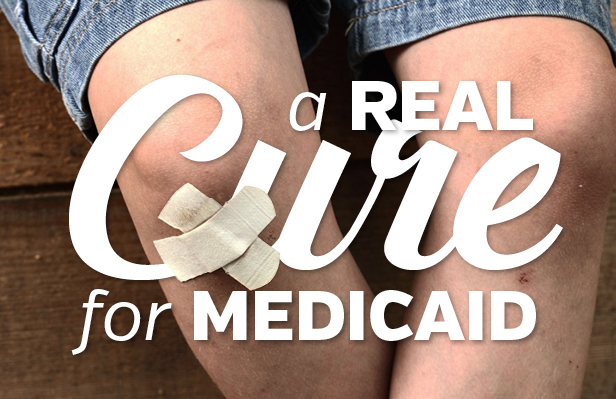Media

The Case for Block Granting Medicaid
Governor Wolf is decrying efforts in Washington to give states more control over Medicaid through a block grant.
This will have a devastating impact for many Pennsylvanians, and I will fight any attempt to cut coverage for hard-working families and seniors.
Yet reams of federal rules and regulations have driven down the quality of care and driven up the costs to taxpayers.
From a moral and fiscal perspective Medicaid is in desperate need of transformative reform.
From a moral and fiscal perspective Medicaid is in desperate need of transformative reform—reform that can happen only if DC lets states innovate. That’s exactly what a block grant does.
Consider, for example, that Medicaid recipients have more difficulty finding doctors and longer wait times than those with private insurance—thanks to low provider reimbursements and a maze of red tape. And despite legislative efforts, thousands continue to languish on the waiting list for intellectual disability services.
Additionally, Medicaid alone consumes more of the state budget than Pre-K-12 education, higher education, transportation, and debt service combined. And Medical Assistance and Long Term Living costs are projected to rise by another $844 million next year from the state general fund alone, according to the Independent Fiscal Office. Some $200 million of this is the result of the Medicaid expansion reimbursement rate and other cost increases tied to federal mandates and restrictions on making program changes.
Looking forward, human services costs are expected to increase by more than 5 percent every year, while state revenue growth is projected to be around 2 percent per year.
Block-granting Medicaid is critical if we want to improve quality of care and spend responsibly.
Rhode Island, for example, helped more people obtain the community-based care they prefer while saving $55 million in three years through a global waiver (like a block grant, a global waiver waives regulations in return for a set amount of funding). Block granting was also a key feature of the highly successful 1996 welfare reform initiative that dramatically increased income among single moms and reduced childhood poverty.
Despite the evidence, block grant critics insist a limit on federal funds (read taxpayer funding) will hurt enrollees.
Joan Benso, CEO of Pennsylvania Partnerships for Children, notes:
What we worry about in a block grant is that kids will be pitted against very needy adult populations, such as seniors, such as the disabled, such as their own parents.
Ted Dallas, secretary of the Pennsylvania Department of Human Services, claims:
It’s hard to say without seeing what the proposal is, but if it is a traditional block grant, it could have devastating consequences,
In reality, kids are already losing out to adults for limited funds. Skylar is ten years old with a rare neurological condition called schizencephaly. For years, she’s languished on the waiting list for home-based services in Arkansas while over 300,000 able-bodied adults joined the Medicaid rolls.
Waiting lists aside, some states have slashed benefits to the vulnerable in order to afford expansion.
In Illinois, on the same day state legislators implemented an early Medicaid expansion for Cook County, they voted to cut traditional Medicaid, costing one patient his access to seizure medication.
The “free money” from Washington is not endless. Flexibility and innovation available through a block grant are the best way to fix an unsustainable Medicaid system that puts the most vulnerable at a disadvantage and often ignores health outcomes.
A successful Medicaid program isn't defined by how many it serves. Instead, it’s defined by whether those with ongoing needs can access quality care when they need it and by how many able-bodied individuals successfully transition to private insurance.